Many people love looking at the gilded images in medieval manuscripts. There is nothing quite like the shimmer of gold leaf as the page is turned.
However, it was ink made from oak galls that made the composition of those beautiful manuscripts possible.
How was oak gall ink used?
As well as being used for the text, images were drawn in ink –

BL Harley 4903
before being gilded –

What are the ingredients?
There is a wonderful recipe for oak gall ink dating back to 1483 held in the UK National Archives.
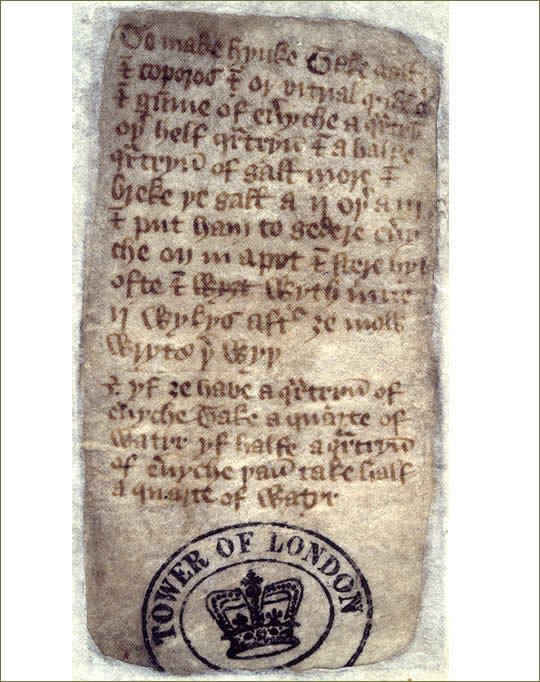
Recipe for making oak gall ink. The UK National Archives, C47/34/1/3.
This tells us that four substances are needed to make the ink – oak galls, copperas (ferrous sulphate or iron vitriol), gum arabic and water.
Oak galls are around 2-5cm in diameter and caused by chemicals injected into the oak tree by the larvae of a parasitic wasp.
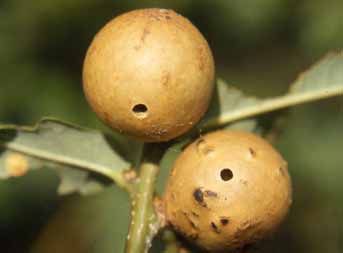
Oak galls. Photo by Brian Ecott.
When ground up and soaked in water (or, in some recipes, wine) they release tannins.
Harvested galls need wrapping in a cloth and breaking up before using – a hammer works well for this! Thankfully, for those of us without access to oak woods, it is possible to buy oak galls ready ground.
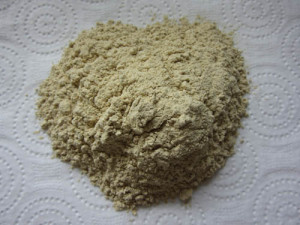
Ground Oak Galls
How to make oak gall ink – the process.
Making the ink is simple – just add water to the powdered galls and simmer, then strain through muslin.
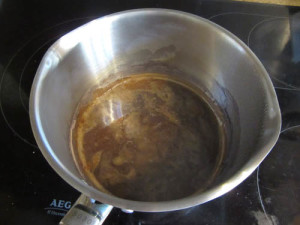
Take some ferrous sulphate
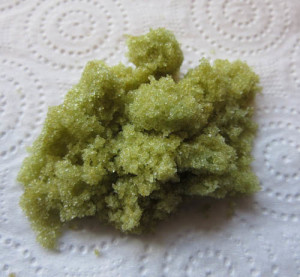
…dissolve it in water and add to the oak gall liquid, instantly creating black ink.
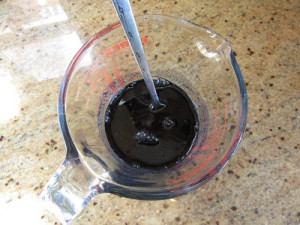
This should be left for a couple of weeks, stirred from time to time, and then re-strained through muslin. The addition of gum arabic both helps the ink to flow better and binds the pigment.
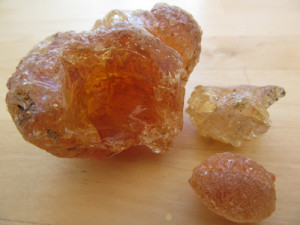
Gum Arabic
The ink is permanent. However, we know that it burns through parchment or paper after many years, a characteristic which has left us some very threadbare documents. This is the result of the mildly acidic tannic acid in the galls, so add some eggshells to the ink to neutralise this.
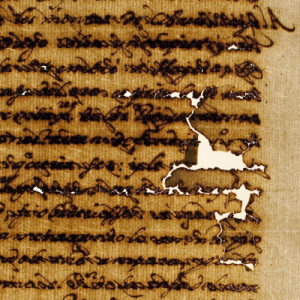
Ink Corrosion. Photo: Yale University.
It’s a lovely ink to use. If you use a very fine nib the ink will look paler than you expect when you first start to write, but it darkens on the page.
We may not have many oaks here, but we do have walnut trees! When the nuts are ready for havesting I’ll make some walnut ink and show you that process.

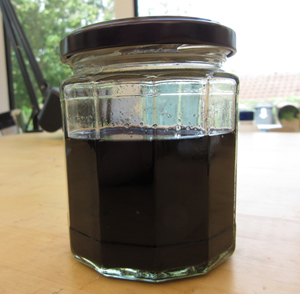
Fascinating – just watched the programme on the oak tree – I hadn’t realised that oak galls were used to make ink, looked up images and found your website. Would love to do a workshop some time, though you are a long way from my home in Bristol
Hi Ruth
I always wonder who first discovered that you could make ink out of galls – it seems pretty unlikely, on the face of it!
Have you been to Clearwell Caves? They are not far from you, in the Forest of Dean. It’s the only cave system left in that area where they still mine for pigment. We went a week or so ago when we were down your way and I keep meaning to post some pictures on here. I’ll try and get that done at the weekend.
Workshop – I’m planning this for next spring / summer, when the weather is better for those travelling from a distance. Keep an eye on the website or, if you prefer, sign up for my newsletter – it would be good to meet you!